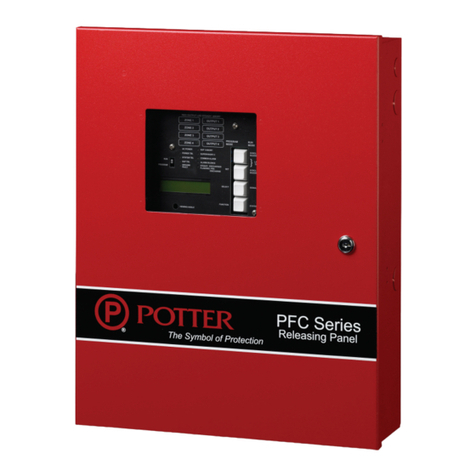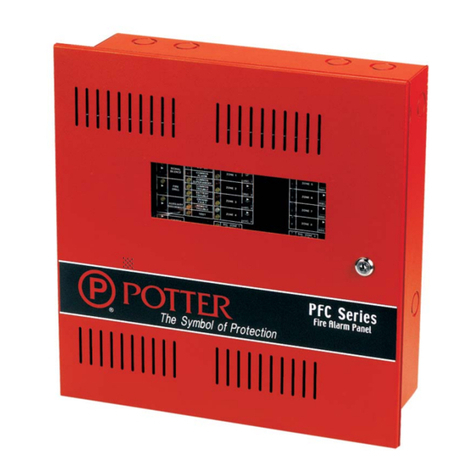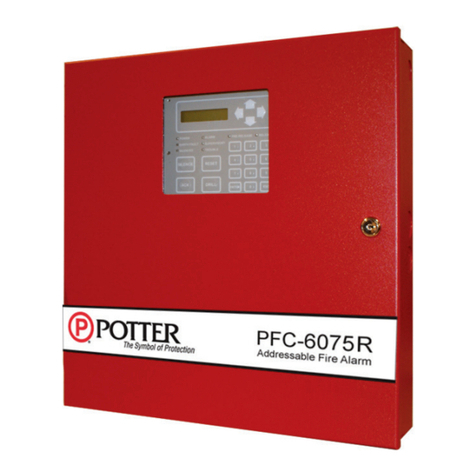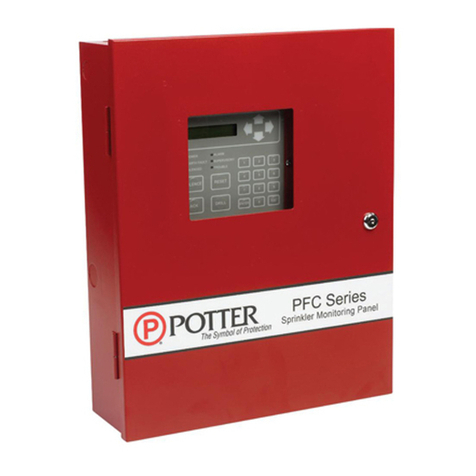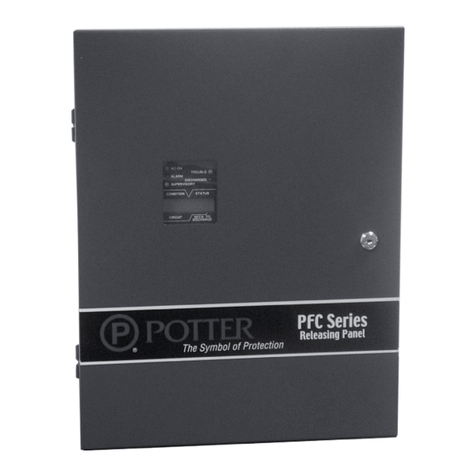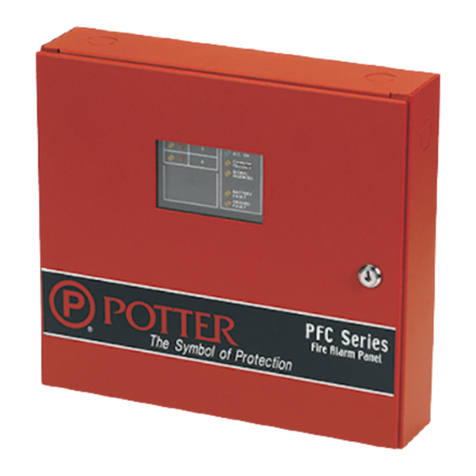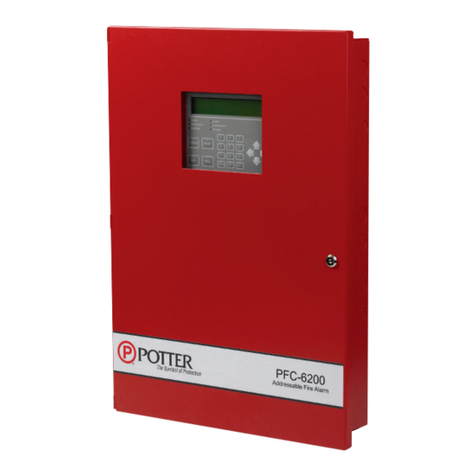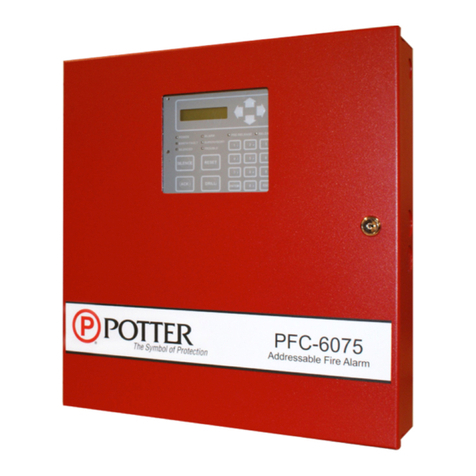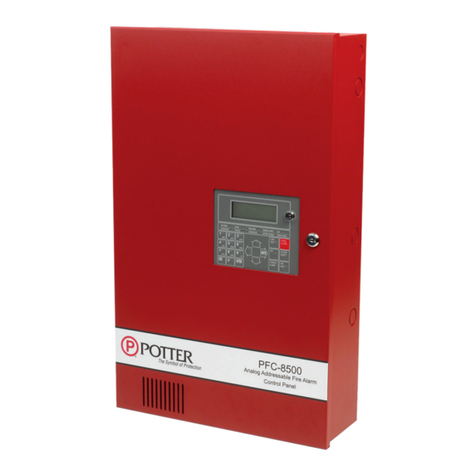
PFC-4064 KEYPAD PROGRAMMING • 8870080 • REV A • 12/17
Potter Electric Signal Company, LLC
5757 Phantom Drive Ste 125 • St. Louis, MO 63042 • 314-595-6900 • 800-325-3936
WARRANTY INFORMATION
The essential purpose of any sale or contract for sale of any of the products listed in the POTTER catalog or
price list is the furnishing of that product. It is expressly understood that in furnishing said product, POTTER
does not agree to insure the Purchaser against any losses the Purchaser may incur, even if resulting from the
malfunction of said product.
POTTER warrants that the equipment herein shall conform to said descriptions as to all afrmation of
fact and shall be free from defects of manufacture, labeling and packaging for a period of one (1) or
ve (5) year(s), depending on the product, from the invoice date to the original purchaser, provided that
representative samples are returned to POTTER for inspection. The product warranty period is stated on
the exterior of the product package. Upon a determination by POTTER that a product is not as warranted,
POTTER shall, at its exclusive option, replace or repair said defective product or parts thereof at its own
expense except that Purchaser shall pay all shipping, insurance and similar charges incurred in connection
with the replacement of the defective product or parts thereof. This Warranty is void in the case of abuse,
misuse, abnormal usage, faulty installation or repair by unauthorized persons, or if for any other reason
POTTER determines that said product is not operating properly as a result of causes other than defective
manufacture, labeling or packaging.
The Aforesaid Warranty Is Expressly Made In Lieu Of Any Other Warranties, Expressed Or Implied, It
Being Understood That All Such Other Warranties, Expressed Or Implied, Including The Warranties Of
Merchantability And Fitness For Particular Purpose Are Hereby Expressly Excluded. In No Event Shall
Potter Be Liable To Purchaser For Any Direct, Collateral, Incidental Or Consequential Damages In
Connection With Purchaser’s Use Of Any Of The Products Listed Herein, Or For Any Other Cause Whatsoever
Relating To The Said Products. Neither Potter Nor Its Representatives Shall Be Liable To The Purchaser
Or Anyone Else For Any Liability, Claim, Loss, Damage Or Expense Of Any Kind, Or Direct Collateral,
Incidental Or Consequential Damages Relative To Or Arising From Or Caused Directly Or Indirectly By Said
Products Or The Use Thereof Or Any Deciency, Defect Or Inadequacy Of The Said Products. It Is Expressly
Agreed That Purchaser’s Exclusive Remedy For Any Cause Of Action Relating To The Purchase And/or Use
Of Any Of The Products Listed Herein From Potter Shall Be For Damages, And Potter's Liability For Any And
All Losses Or Damages Resulting From Any Cause Whatsoever, Including Negligence, Or Other Fault, Shall
In No Event Exceed The Purchase Price Of The Product In Respect To Which The Claim Is Made, Or At The
Election Of Potter, The Restoration Or Replacement Or Repair Of Such Product.
ii
